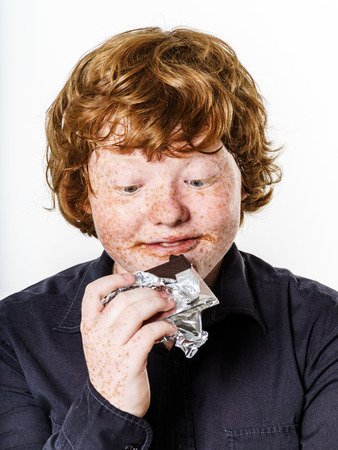
Happy Healthy Hump Day: Childhood Diabetes, It’s Not Just Type 1 Anymore
Posted: April 19, 2017
Childhood Diabetes, It’s Not Just Type 1 Anymore
Bobbi here with a subject close to my heart, children with diabetes. My first job as a registered dietitian was as a counselor and educator for children with diabetes. You may think that making a 5 year old understand what is happening inside his body and what he has to do to stabilize it would be difficult. Well, I am here to tell you that was the easier part. Getting his parents to understand that what they perceive as “treating” their bouncing baby boy could harm him. Yes, that seems blunt, but it is true never the less. Unhealthy eating habits to a child suffering from diabetes can be lethal.
Diabetes occurs when the body cannot produce enough insulin or cannot respond appropriately to insulin. Insulin is a hormone that the body needs to absorb and use glucose (sugar) as fuel for the body’s cells. Without a properly functioning insulin signaling system, blood glucose levels become elevated and other metabolic abnormalities occur, leading to the development of serious, disabling complications.
There are three common types of diabetes are:
- Type 2 diabetes, which results from a combination of resistance to the action of insulin and insufficient insulin production
- Type 1 diabetes, which results when the body loses its ability to produce insulin
- Gestational diabetes, a common complication of pregnancy. Gestational diabetes can lead to perinatal complications in mother and child and substantially increases the likelihood of cesarean section.
I am going to concentrate on type 2 in children today. Years ago, it was rare to hear about a child with type 2 diabetes. Doctors used to think kids only got type 1. It was even called juvenile diabetes for a long time. Not anymore. Now, according to the CDC, more than 208,000 people younger than 20 have this disease. That number includes both type 1 and type 2 diabetes.
The single biggest cause of type 2 diabetes in children is extra weight. In the U.S., nearly 1 out of every 3 children is overweight. Once a child gets too heavy, she’s twice as likely to get diabetes. One or more of these things may contribute to extra weight or obesity:
- Unhealthy eating
- Lack of physical activity
- Family members (alive or dead) who’ve been overweight
- Rarely, a hormone problem or other medical condition
- As with adults, type 2 diabetes is more likely to affect children who carry extra weight around the middle.
At first, there may be no symptoms. Take your child to the doctor if you notice any of these:
- Unexplained weight loss
- Hungry or thirsty a lot, even after eating
- Dry mouth
- Peeing a lot
- Fatigue
- Blurred vision
- Heavy breathing
- Slow healing of sores or cuts
- Itchy skin
- Numbness or tingling in the hands or feet
Diabetes is a disease that affects the whole family, especially when a child is diagnosed. Whether you’re a parent, sibling or other family member, your support and understanding can make all the difference.
More resources:
http://www.diabetes.org/living-with-diabetes/parents-and-kids/?referrer=https://www.google.com/
https://www.healthypeople.gov/2020/topics-objectives/topic/diabetes
http://www.medicalnewstoday.com/articles/284974.php

